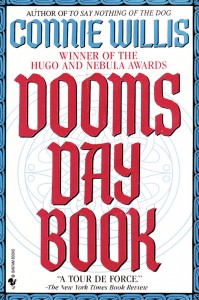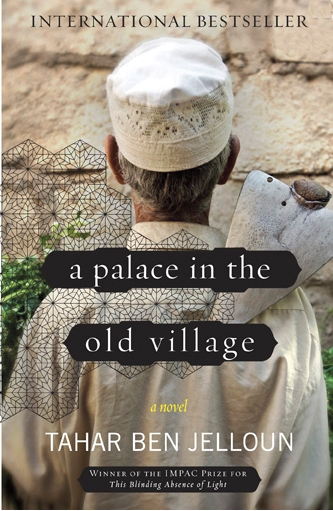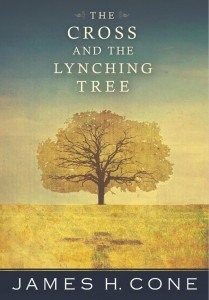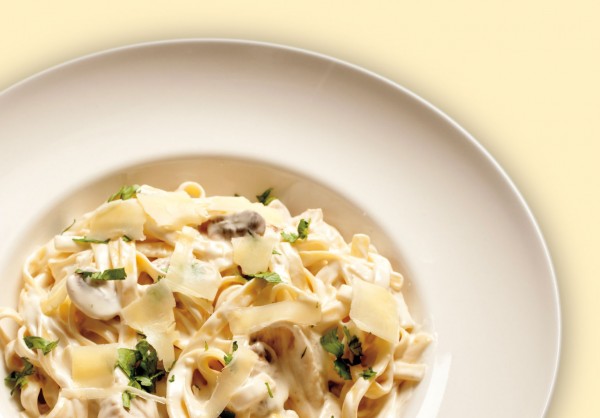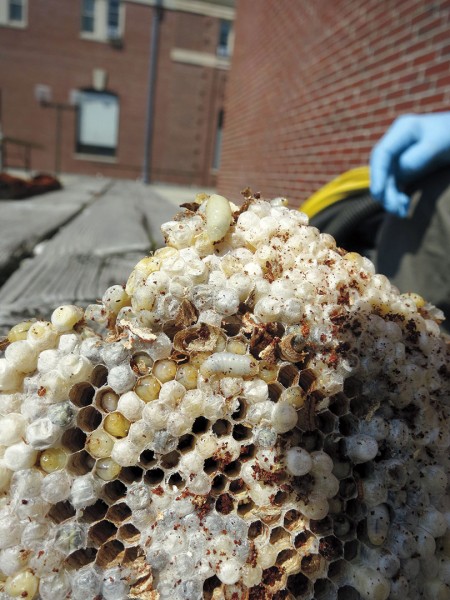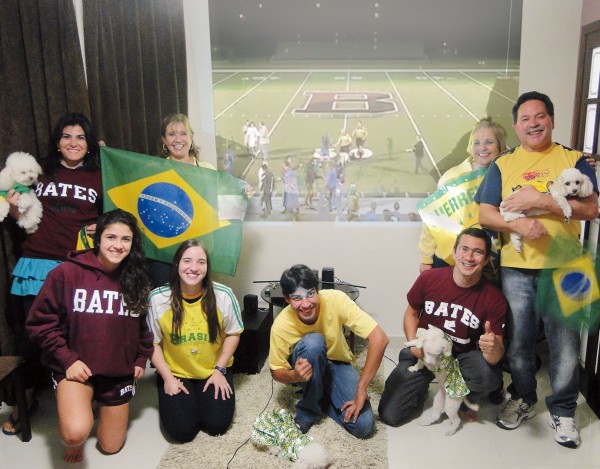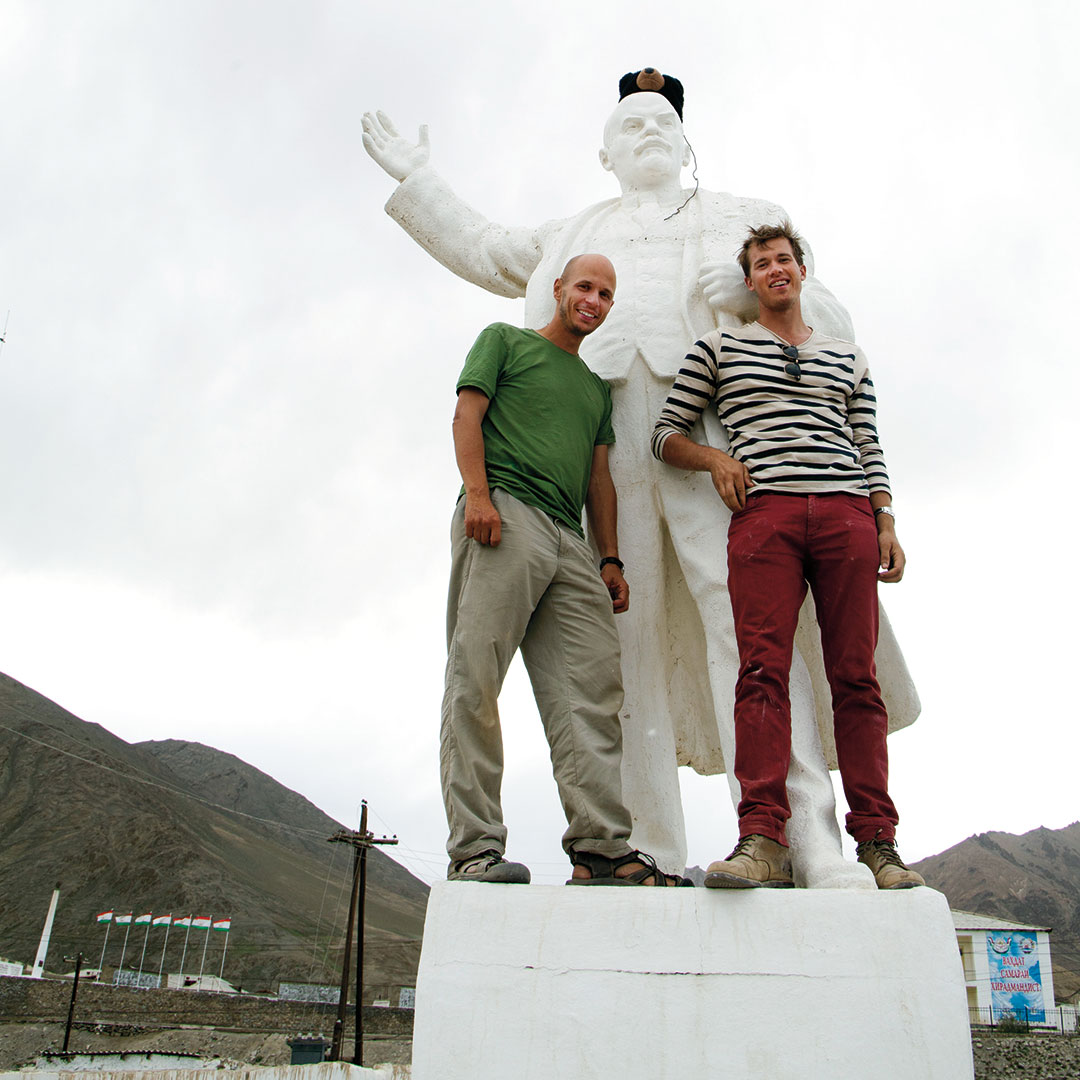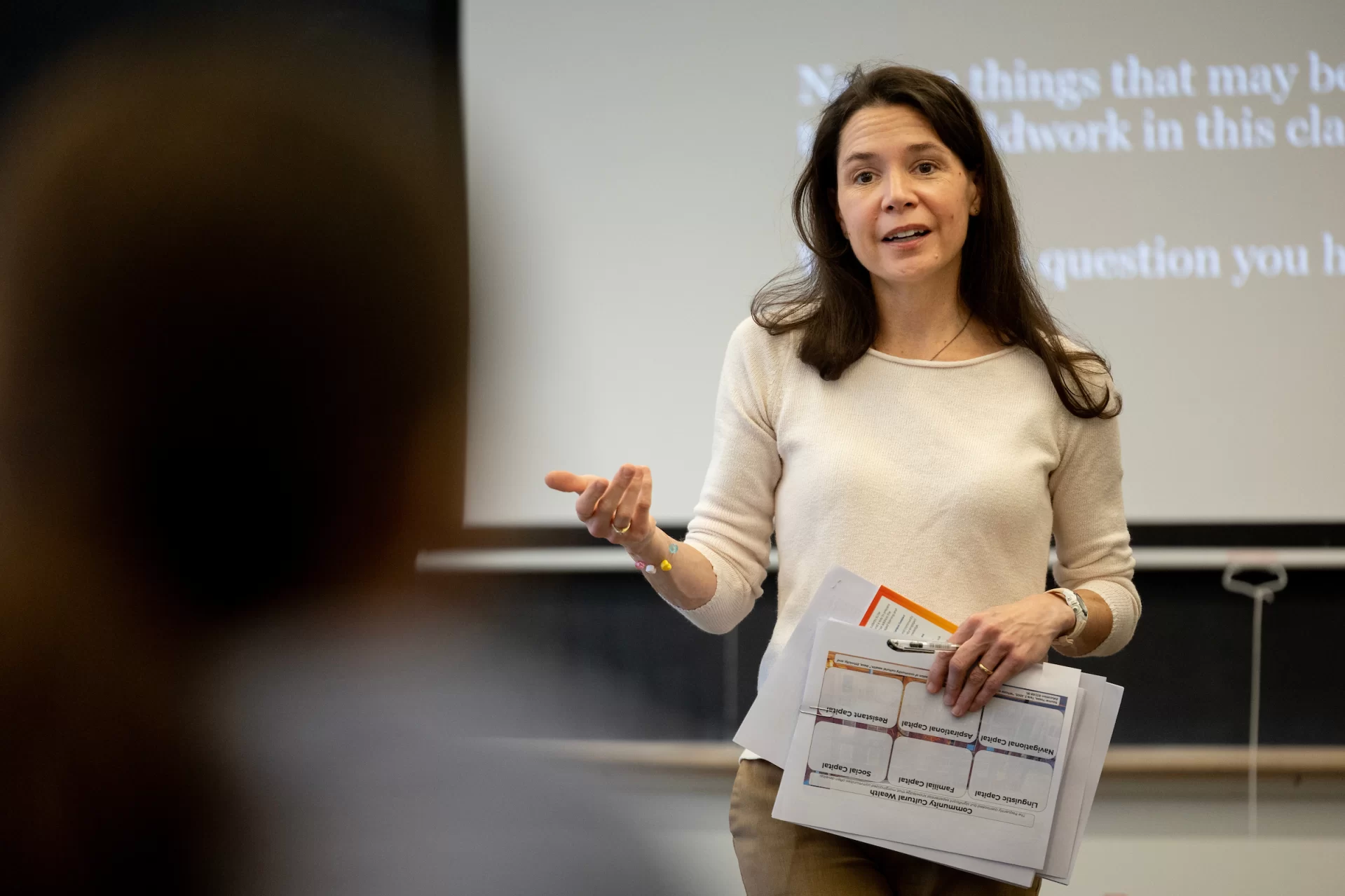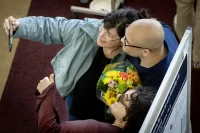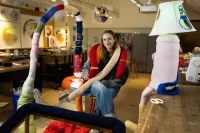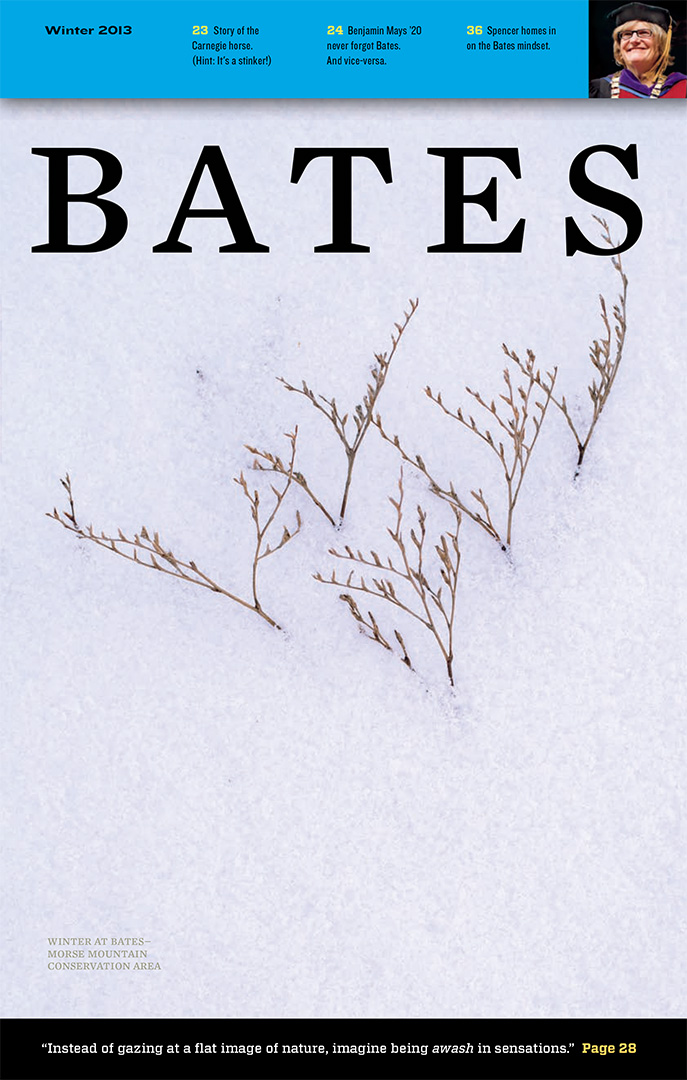
Amusements: Carnegie’s half horse, book recommendations from faculty and staff
Carnegie’s Half Horse
There simply weren’t enough bones to make an entire horse skeleton. So, on the principle that half a loaf is better than none, Art Ciccone ’69 and Tom Hutchinson ’69 created half a skeleton.
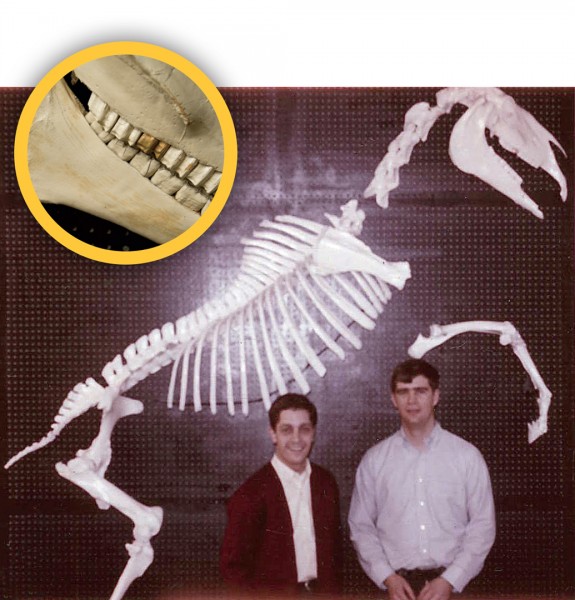
Art Ciccone ’69 and Tom Hutchinson ’69 pose with their creation back in the day. The insert shows the gold tooth they added as a tribute to their biology professor.
Today, their junior-year project remains on display on the fifth floor of Carnegie Science, where local schoolchildren on tour assume the articulated half-skeleton is a dinosaur.
Building the skeleton was a comparative anatomy assignment, and Ciccone and Hutchinson used horse bones that had been kicking around in a box in the lab.
“We were told they came from Thorncrag Bird Sanctuary,” Ciccone says. Campus lore says the bones belonged to a horse — a big horse, suggests bio professor Lee Abrahamsen, like a Percheron or Belgian — that had been euthanized at Thorncrag, which was once a farm. Indeed, what looks like a bullet hole is visible on the front of the skull.
When Ciccone and Hutchinson dug into their assignment, they discovered the set wasn’t complete, hence the 50-percent solution.
And that’s how they found themselves in Carnegie Science, late at night, sawing horse bones. “We used a table saw to cut the pelvic girdle and the vertebrae and some of the other pieces in half,” says Hutchinson.
The worst part, by far, was the smell. “When you saw a dried bone, it stinks,” says Ciccone.
“It smelled up the whole building,” Hutchinson adds.
Once the half-beast was assembled, Ciccone, now a medical illustrator in West Newbury, Mass., and Hutchinson, a dentist in Falmouth, Mass., gave it a distinctly personal touch: They painted one tooth gold to honor their bio professor, Mark Crowley, who had a gold tooth. — RA
Books
From the College Store’s annual Non-required Reading List, here are a few book recommendations from Bates faculty and staff.
Doomsday Book by Connie Willis, suggested by Lee Abrahamsen, associate professor of biology:
“I’m a sucker for time travel. If you like the idea of experiential learning, and the idea of trying to convince people from another century that you’re one of them (despite being immune to their diseases!), you’ll love this.”
A Palace in the Old Village by Tahar Ben Jelloun, suggested by Áslaug Ásgeirsdóttir, associate professor of politics:
“An interesting — and somewhat sad — take on the immigrant experience in Europe and the challenges of returning ‘home.’”
Generosity by Richard Powers, suggested by Rob Farnsworth, senior lecturer in English:
“A novel more interesting for its speculative ideas than for its characters, perhaps, but genomically troubling.”
The Cross and the Lynching Tree by James Cone, suggested by Bill Blaine-Wallace, multifaith chaplain:
“Cone argues convincingly that Americans have not embraced, save for the Harlem artists, the obvious: Lynching is America’s execution of God.”
Is Your ’Fredo Weak?
Not if it’s made this way. From the Class of 2012 Senior Cookbook published by Dining Services.
Alfredo Sauce (Makes 3 1/2 cups)
1 quart plus 3/4 cup milk
1/2 cup margarine
1/2 cup flour
1/4 teaspoon garlic
1/2 cup plus 2 tablespoons grated Parmesan
5/8 teaspoon salt
1/4 teaspoon white pepper
1/8 teaspoon cayenne pepper
In a double boiler, heat milk 15 minutes. Prepare light roux from margarine and flour; thicken the milk with the roux.
Add garlic; simmer for 15 minutes.
Add Parmesan and spices; simmer for 5 more minutes.
Crafty ’Cat
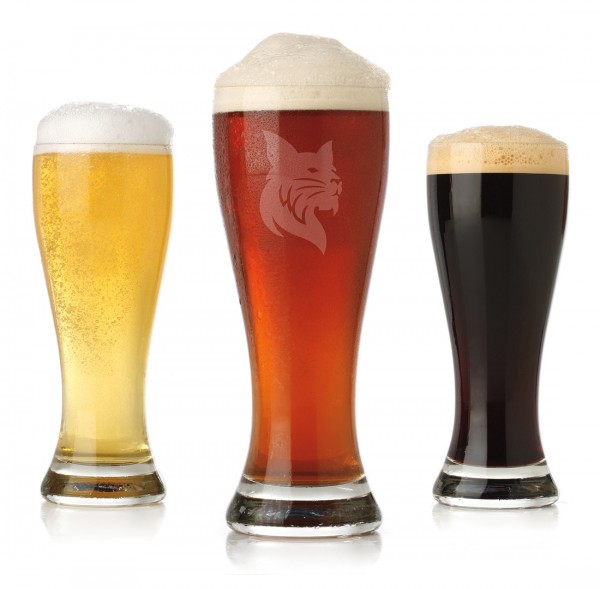
When Gary Dzen ’05, who reports on craft beer for The Boston Globe, invited readers to share 50 words about their favorite brews, this Bates-flavored entry by Jillian Cappucci ’10 hopped to the top of the list:
Across the Quad to P’gill, over by Pettigrew,
A Bobcat sat and wondered, “What’s my favorite brew?”
In her mind she pictured its deep golden shade.
She smiled wide thinking, “This one is Lewiston-made.”
She craved the bitter hops of a Stowaway,
So she sipped her favorite, Baxter’s IPA.
Campus Test
How strong is your knowledge of Bates’ quirky, cool and colorful past?
Before moving to Hedge Hall in 2011, religion and philosophy were headquartered in a wood-frame building at 75 Campus Ave. Over the fall, the building had a much different purpose, yet one that echoes those disciplines’ interest in the eternal fate of the human soul.
What is it used for?
A. Local HQ for Mayan end-of-worlders
B. Training site for Lewiston firefighters
C. Worship space for followers of Frank Sandford, Class of 1886, founder of the apocalyptic Shiloh movement
Answer: B — It’s a great training building, says Bruce McKay of the Lewiston Fire Department. “It offers a real environment: 15 rooms, two stairways. We do everything from hose line advancement and laddering to breaching walls for rescue or entry.”
Hit the Road, Jack
The yellowjacket nest that took up residence within one of the popular wood benches outside Ladd Library last summer was given the heave-ho right before students returned.
…And Viewers at Home
When Luis Pereira ’16 of Curitiba, Brazil, took to Garcelon Field on Sept. 11 for his first home soccer game, he had fans in far places: his family, back in Brazil, who’d gathered to watch the livestream. From September to December, Bates sports livestreams recorded 29,000 page views.
To watch a Bobcat game, go to bates.edu/athletics/live.
